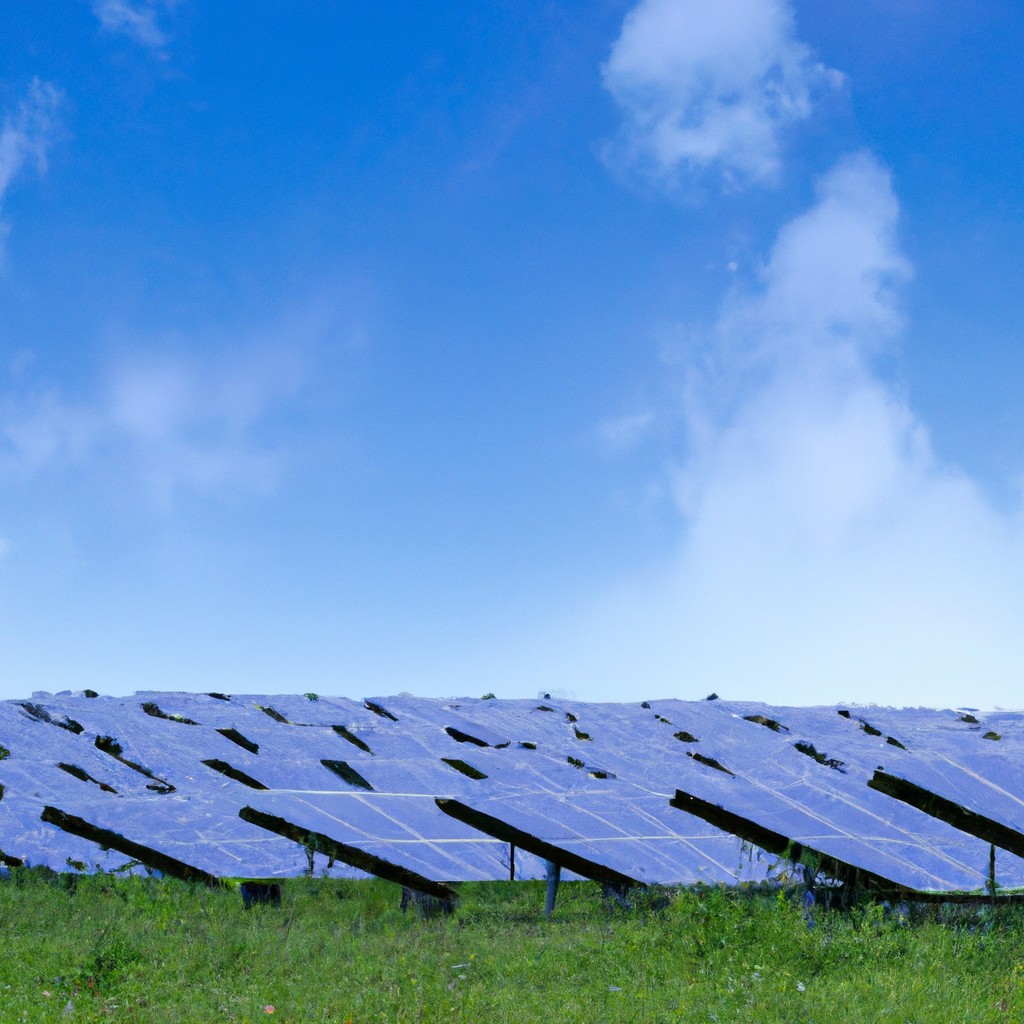This article provides an unbiased overview of the various advantages and disadvantages associated with the utilization of solar energy.
Key takeaways:
- Renewable energy source with virtually inexhaustible supply
- Reduces electric bills through net metering and government incentives
- High initial cost of equipment and installation
- Efficiency depends on sunlight availability and weather conditions
- Environmental implications in the manufacturing process
Renewable Energy Source

Harnessing solar power promotes a shift from finite, fossil fuel sources towards sustainable energy. As solar energy originates from the sun, it provides a virtually inexhaustible supply, particularly beneficial for future generations.
The technology’s scalability makes it useful for diverse applications, from small-scale residential to large-scale utility systems. Moreover, advancements in this field have led to increased efficiency, meaning that solar panels now convert more sunlight into usable energy than ever before.
This continuous improvement supports the viability and attractiveness of solar power as a long-term energy solution.
Reduces Electric Bill
Solar energy systems harness the sun’s power to generate electricity for homes, which can lead to significant savings on energy bills.
When a household produces its own electricity, it uses less from the grid, and can even feed excess power back through net metering.
This process allows solar panel owners to sell surplus energy to the utility company, further offsetting the cost of installation over time.
Additionally, many governments offer tax incentives, rebates, or feed-in tariffs to encourage solar adoption, which can also reduce the overall financial burden for homeowners.
The combination of these factors can result in a noticeable decrease in monthly electric costs.
High Cost of Solar Panels
One of the primary barriers to solar power adoption is the initial investment required for equipment and installation. The expenses can range from a few thousand to tens of thousands of dollars, influenced by factors such as the size of the system and the complexity of the installation. The cost includes solar panels, inverters, battery storage systems if off-grid or backup power is desired, mounting hardware, and associated labor.
Economies of scale have been reducing these costs over time; however, they remain significant, especially when considering higher quality or more efficient panels that come with premium pricing. Additionally, potential buyers must assess the longevity of the system against the upfront cost, recognizing that solar panels typically come with a 20- to 25-year warranty, but inverters may require replacement sooner.
Financing options such as solar loans, leases, and power purchase agreements (PPAs) have been developed to alleviate the upfront financial burden, allowing homeowners to pay for their systems over time. Government incentives, tax credits, and rebates can also offset costs substantially, though these programs vary by region and their availability may fluctuate with changes in policy.
Despite the initial costs, the long-term savings on energy bills and the increase in property value can make solar panels a financially viable option in the long run. Prospective buyers should conduct a thorough cost-benefit analysis, taking into account their geographical location, available sunlight, and energy needs to make an informed decision.
Sunlight Dependent
Solar power systems harness energy from the sun’s rays, which means their efficiency directly correlates with the available sunlight. Geographical location plays a pivotal role; regions closer to the equator typically have higher solar energy potential.
Seasonal variations influence production, with shorter days in winter potentially reducing output. Furthermore, local weather conditions, such as prolonged cloudy periods, can significantly affect daily power generation.
To mitigate variability, energy storage systems can store excess energy for use during low-light conditions, and grid-tied systems can supplement gaps in production. However, these solutions may add to the initial investment and complexity of a solar installation.
Environmental Impact of Manufacturing
While solar power is a clean source of energy, the manufacturing process of solar panels does have environmental implications. The production entails the extraction and processing of quartz to produce silicon, which requires significant energy and can result in the emission of greenhouse gases.
Furthermore, the use of hazardous materials like cadmium and lead in some photovoltaic (PV) systems poses concerns for safe disposal at the end of their life cycle. Efforts to recycle panels and advances in producing thin-film solar cells using less toxic materials are steps toward mitigating these environmental impacts.
FAQ
What are 3 advantages of solar?
Three advantages of solar power include its sustainability, it being a renewable source of energy, and its plentiful supply.
What are the 5 uses of solar energy?
Solar energy is primarily used for electricity generation, water heating, space heating, ventilation, and lighting.
How does solar power contribute to energy security?
Solar power contributes to energy security by providing a renewable, inexhaustible source of energy that reduces dependence on fossil fuels and mitigates the effects of energy price fluctuations.
What are the environmental benefits of using solar energy?
Solar energy significantly reduces greenhouse gas emissions and carbon footprint, and uses a renewable energy source, thereby contributing to a sustainable environment.
Could solar energy be the primary power source for homes in the future?
Yes, solar energy could potentially become the primary power source for homes in the future due to its sustainability and advancements in solar technology.





